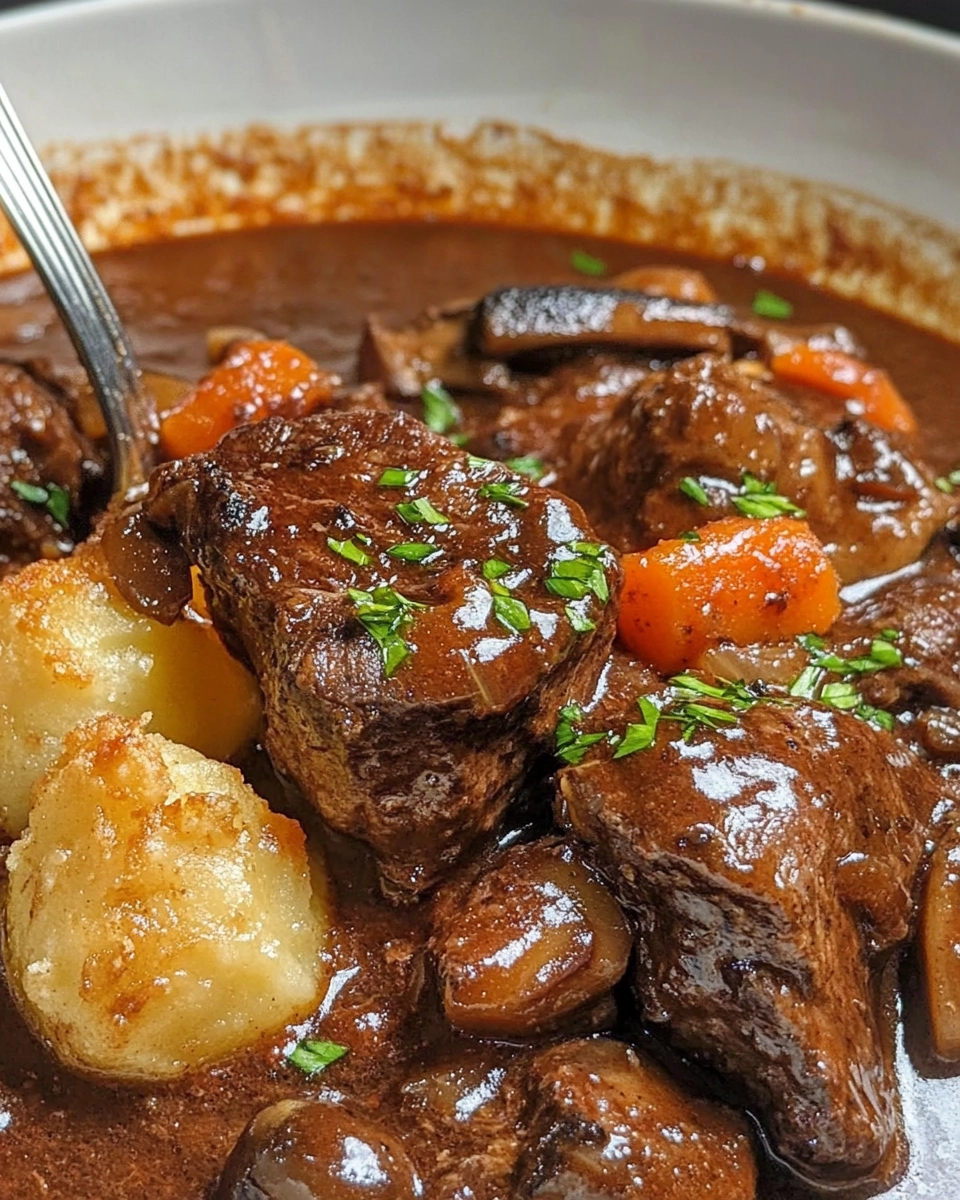My name’s Maggie Rae Donovan, and I’m a 42-year-old home cook living just outside of Asheville, North Carolina. I’m not a classically trained chef. I never went to culinary school, and you won’t catch me quoting the greats from glossy cookbooks. But I’ve spent the last 25 years stirring, sizzling, baking, burning (yes, sometimes), and falling madly in love with food in my own little kitchen.
I still remember the first time I tasted Italian Lemon Jam. I was in New York City visiting my sister, who lived in a cozy walk-up just off Mulberry Street in Little Italy. That morning, we wandered into a family-run bakery tucked between a flower shop and a tailor. The air was thick with espresso and flour. At the counter, I saw a small jar of lemon jam. I was skeptical—jam was supposed to be strawberry or peach, right? But one taste of that tangy, sweet, slightly bitter spread on a piece of warm focaccia, and I was hooked.
Back home in North Carolina, I couldn’t find anything like it. So, in true Maggie fashion, I tried to make it myself. At first, it was a disaster. Too bitter. Too sweet. Too runny. But slowly, batch after batch, I got the balance right. Bright and citrusy with just enough bitterness to remind you it’s made from real lemons. Smooth, golden, and perfect on toast, spooned over yogurt, or tucked inside a tart.
Check out this refreshing treat like lemon yogurt cake with no white flour if you’re looking for more citrusy inspiration.
I didn’t grow up eating Italian preserves, but I did grow up learning how to stretch what we had and make something worth sharing. And that’s what this jam is to me. A little luxury that came from lemons. It’s sunshine in a jar. Tart and sweet. Rustic and elegant. It’s not just a recipe. It’s a memory I brought home and made my own.
In this article, I’m going to walk you through how to make authentic Italian lemon jam, tips to balance its bitterness, how to serve it, and even how to gift it. Whether you’re citrus-curious or a full-blown lemon lover, this one’s going to be your new kitchen favorite.

Table of Contents
What Is Italian Lemon Jam and Why It’s Worth Making
A Citrus Staple in Italian Homes
Italian lemon jam—often called marmellata di limoni—is a beloved staple across many southern Italian households, especially along the Amalfi Coast and in Sicily, where lemons grow in abundance. Unlike most fruit jams that focus on sweetness, this jam is known for its bright tang, slight bitterness, and aromatic intensity. It’s not just spread on toast—it’s used in tarts, spooned over cheese, and stirred into yogurt.
What Makes It Different from Lemon Curd or Jelly?
While lemon curd is made with eggs and butter for a creamy texture, Italian lemon jam uses the whole fruit—peel and all. The result is more robust in flavor, with layers of zest, juice, and natural bitterness that you won’t find in jellies or curds. It’s chunkier, more rustic, and relies heavily on slow cooking and natural pectin found in the lemon peel.
| Spread Type | Texture | Ingredients Used | Flavor Profile |
|---|---|---|---|
| Lemon Curd | Smooth, creamy | Lemon juice, sugar, eggs, butter | Tart and rich |
| Lemon Jelly | Clear, firm | Lemon juice, sugar, pectin | Sweet, clean citrus |
| Italian Lemon Jam | Thick, rustic | Whole lemons, sugar, water | Sweet, tangy, slightly bitter |
Why It’s Worth the Effort
Yes, it takes some time to make it right. You’ll be simmering lemon slices slowly, adjusting sugar levels, and maybe blanching to reduce bitterness. But the final result? A golden, glossy jam that bursts with Mediterranean sunshine. It’s unlike anything from a store shelf. It’s versatile, deeply flavorful, and makes an ordinary breakfast feel like a Tuscan vacation.
A Versatile Delight
This jam goes way beyond toast. Try it:
- In a thumbprint cookie
- As a glaze for roast chicken
- Swirled into vanilla ice cream
- With goat cheese on crostini
Don’t miss our fresh pickled cucumber salad—another zippy, homemade staple that’s perfect for summer snacking alongside this jam.
Ingredients You’ll Need for the Perfect Italian Lemon Jam

Start with the Right Lemons
For a truly authentic Italian lemon jam, you’ll want lemons with thin skins and minimal bitterness. Meyer lemons are a great choice if you can’t get Amalfi lemons. They’re naturally sweeter and have a floral aroma that elevates the jam’s flavor.
If using regular lemons, blanch them briefly (more on that in Part 3) to reduce harsh bitterness from the peel and pith.
Key Ingredient:
- 2 lbs fresh organic lemons (thin-skinned if possible, preferably unwaxed)
Sugar for Sweetness and Structure
The sugar in lemon jam does more than sweeten—it acts as a preservative and helps thicken the jam naturally as it simmers. Granulated white sugar is standard for clarity and clean flavor.
You’ll Need:
- 4 cups white granulated sugar
Optional: swap ½ cup for honey to add complexity
Water: Keep It Simple
Water helps extract the pectin from the lemon peel and keeps the jam from burning while it cooks down. Use filtered water for the purest flavor.
Add:
- 5–6 cups filtered water
Optional Add-Ins for Flavor Play
Italian lemon jam is delicious in its pure form, but you can experiment with additions:
- Fresh rosemary sprig (remove after cooking) for a savory hint
- A splash of limoncello (added at the end) for deeper citrus notes
- Thinly sliced ginger if you love spice and warmth
Discover great ideas like our banana oatmeal mug dessert with no sugar if you’re experimenting with more naturally sweetened dishes.
Equipment You’ll Need
No need for fancy gear, but having the right tools helps:
- Large heavy-bottomed pot
- Sharp knife and mandoline (for even slicing)
- Wooden spoon
- Canning jars, lids, and a funnel
- Candy thermometer (optional but useful)
The Step-by-Step Guide to Making Italian Lemon Jam at Home
Step 1: Prep the Lemons
Wash lemons thoroughly. If they’re waxed, scrub them with warm water and a bit of baking soda to remove the coating. Then slice the lemons as thinly as possible—ideally with a mandoline—for even cooking.
Remove seeds as you go. Keep the peel on, but trim off excess pith if it’s too thick, since this is where most bitterness lives.
Step 2: Blanch to Reduce Bitterness
Place the lemon slices in a pot of cold water and bring it to a boil. Let it simmer for 2 minutes, then drain. Repeat this blanching process 2 to 3 times, using fresh water each time. This crucial step pulls out excess bitterness from the peel and pith while softening the lemons.
Tip: Don’t skip this step if you’re using standard lemons. It’s the difference between delicious and inedible.
Step 3: Simmer with Sugar and Water
Return the blanched lemons to the pot. Add 5–6 cups of water and 4 cups of sugar. Stir to dissolve. Bring the mixture to a boil, then reduce to a gentle simmer.
Let it bubble away, uncovered, for 45–60 minutes, stirring occasionally to prevent sticking. The lemons will become translucent, the liquid thick and syrupy.
If you have a thermometer, look for the mixture to hit 220°F (105°C)—that’s the jam setting point.
Check out 5-minute lemon fudge for another quick citrus treat once you’ve got lemon on the brain.
Step 4: Test the Jam
To check readiness without a thermometer, place a spoonful on a chilled plate and run your finger through it. If the jam wrinkles slightly and holds its shape, it’s ready.
Too runny? Keep simmering. Too thick? Add a splash of water and stir gently.
Step 5: Fill the Jars
Sterilize your jars and lids in boiling water or a dishwasher cycle. While the jam is hot, ladle it carefully into the jars using a funnel. Leave about ¼ inch of space at the top.
Wipe the rims clean, seal tightly, and let the jars cool to room temperature. The lids should pop inward as they seal.
Step 6: Store and Enjoy
Once sealed, store jars in a cool, dark place. Refrigerate after opening. Properly canned jam will last up to 1 year unopened.
| Storage Tips | Notes |
|---|---|
| Unopened Jar | Pantry, up to 12 months |
| Opened Jar | Fridge, use within 4 weeks |
| Freezer Safe | Yes, if using freezer-safe containers |
How to Use Italian Lemon Jam – Sweet, Savory, and Everything In Between

Start with the Classics
Let’s begin with the obvious: toast. A warm slice of sourdough, a swipe of butter, and a dollop of Italian lemon jam—it’s sunshine on a plate. It also pairs beautifully with croissants, biscuits, or English muffins, especially when you want breakfast to feel a little extra.
Spoon It Over Cheese
Lemon jam and cheese? A match made in culinary heaven. The tang and sweetness from the jam perfectly balance creamy, salty, or sharp cheeses.
Perfect Pairings:
- Goat cheese: Mild and creamy
- Brie or Camembert: Soft and buttery
- Aged Parmesan or Asiago: Salty and bold
Serve it on a cheese board with crackers, olives, and a splash of white wine, and you’ve got an elegant appetizer with almost no effort.
Make It Dessert Magic
This jam’s zesty punch makes desserts pop. Try it:
- Swirled into Greek yogurt with granola
- Layered in parfaits
- As a filling in thumbprint cookies
- Drizzled on vanilla ice cream
- Inside lemon bars or tart shells for added zing
Looking for inspiration? Try our lemon yogurt cake with no white flour—a perfect canvas for a spoonful of lemon jam over the top.
Savory Dishes That Shine
Believe it or not, Italian lemon jam works great in savory cooking. The subtle bitterness and citrus brightness bring out deeper flavors in meats and sauces.
Try it with:
- Grilled chicken thighs (as a glaze in the last 10 minutes)
- Roasted pork loin (paired with rosemary and garlic)
- Baked salmon (brushed over the top for a sweet-savory crust)
- Grilled vegetables (mixed with olive oil for a citrus marinade)
Cocktails and Beverages
Add a spoon of lemon jam to iced tea or a hot toddy. Shake it into a cocktail with gin and soda for a fresh twist. You can even thin it with hot water and a touch of honey for a comforting lemon tea.
Homemade Gifts with Heart
Lemon jam in a small mason jar, tied with twine and a handwritten tag, makes a thoughtful gift for:
- Birthdays
- Housewarmings
- Holiday baskets
- Teacher appreciation
Tuck it in a basket with crackers, a wedge of brie, and a bottle of wine, and you’ve created a gourmet gift without breaking a sweat.
Don’t miss our mouthwatering homemade tuna melt patties—a savory recipe where lemon jam makes a surprising condiment upgrade!
How to Reduce Bitterness in Lemon Jam Without Losing Flavor
Why Lemon Jam Can Taste Bitter
Bitterness in Italian lemon jam comes mainly from two sources: the pith (the white layer under the peel) and lemon seeds, both of which contain natural compounds like limonin and naringin. While a touch of bitterness is authentic and adds depth, too much can make the jam harsh and unpleasant.
Tip 1: Choose the Right Lemons
Thin-skinned lemons like Meyer lemons naturally contain less bitterness than standard Eureka or Lisbon varieties. If you’re using standard lemons, pay extra attention to prep steps that remove bitterness.
Good-to-Know:
Organic, unwaxed lemons are ideal. You’re using the whole fruit, so go as clean and natural as you can.
Tip 2: Blanching the Slices (Don’t Skip It)
Blanching is the #1 way to tame bitterness without stripping flavor.
How to Do It:
- Place thinly sliced lemons in a large pot of cold water.
- Bring to a boil and simmer for 2 minutes.
- Drain and repeat this 2–3 times with fresh water each time.
This process leaches out the compounds that cause bitterness while leaving behind the natural citrus oils and zestiness you want.
Tip 3: Trim Excess Pith
If your lemons have thick white pith, you can lightly trim the inner edges of each slice before blanching. This step helps without altering the natural balance of the fruit.
Pro Tip: Don’t go overboard trimming the peel—it adds structure, pectin, and essential oils.
Tip 4: Use Enough Sugar
Sugar not only sweetens the jam, but it also rounds out the bitterness and preserves the citrus flavor. A common mistake is trying to go too low on sugar. For lemon jam, a 2:1 or even 1:1 fruit-to-sugar ratio is standard.
| Sugar Ratio | Result |
|---|---|
| 2:1 (fruit to sugar) | Tangy and more bitter |
| 1:1 (equal weight) | Balanced sweetness |
| 1:1.2 (slightly more sugar) | Smooth and mellow |
Tip 5: Add a Natural Balancer
If your jam still tastes bitter after cooking:
- Add a splash of orange juice for extra sweetness
- Stir in a spoonful of honey at the end for floral depth
- Try a pinch of sea salt—it tones down bitterness and enhances brightness
Tip 6: Let It Rest
Oddly enough, lemon jam mellows over time. After sealing in jars, give it at least 2–3 days before tasting. The flavors settle, the bitterness fades, and the texture becomes smoother.
Don’t miss our rich creamy chicken bacon mushroom stroganoff where a touch of tangy jam could even work as a glaze over chicken for contrast.
Preserving and Storing Lemon Jam – Jars, Freezing, and Shelf Life
Choosing the Right Jars
Preserving Italian lemon jam the right way starts with choosing quality jars. Go with standard glass mason jars that seal well. You’ll want:
- Heat-safe glass
- Two-piece lids (flat top + screw ring)
- Clean, dry interiors before use
Best Sizes:
- 4 oz (great for gifting)
- 8 oz (perfect for personal use)
- 16 oz (for batch storage)
How to Sterilize Your Jars
Proper sterilization prevents mold and spoilage. Here’s a quick step-by-step:
- Wash jars and lids with hot soapy water.
- Place jars in a pot of boiling water for 10 minutes.
- Remove carefully using tongs, place upside down on a clean towel.
- Keep them hot until ready to fill.
Tip: You can also run them through a hot dishwasher cycle and leave them inside until you’re ready to jar.
Filling and Sealing
Ladle hot jam into the jars using a wide-mouth funnel. Leave about ¼ inch of headspace at the top. Wipe rims clean, seal with the lid, and screw on the ring until it’s finger-tight.
For longer shelf life, use a boiling water bath to process sealed jars for 10 minutes. This creates a vacuum seal.
Cooling and Testing the Seal
Let jars cool undisturbed for 12 hours. You should hear a soft “pop” as each one seals. Press the center of each lid—if it doesn’t move, you’ve got a good seal.
Check out our banana oatmeal mug dessert with no sugar for another healthy, make-ahead treat to keep in the fridge next to your jam!
Freezing Lemon Jam
Don’t want to can? No problem. Freezer jam is easy:
- Let jam cool to room temperature
- Pour into freezer-safe containers (leave space for expansion)
- Label and freeze for up to 6 months
Thaw overnight in the fridge when ready to use.
| Storage Method | Duration | Notes |
|---|---|---|
| Pantry (sealed jars) | 6–12 months | Keep in a cool, dark place |
| Fridge (opened jar) | 3–4 weeks | Always use clean spoon |
| Freezer | Up to 6 months | Leave headroom for expansion |
Signs It’s Gone Bad
Lemon jam lasts a long time, but always inspect before using. Discard if you see:
- Mold
- Off-smell
- Bubbling or fermentation
- Cloudiness in the jar
Lemon Jam FAQs – What Everyone Wants to Know

Is lemon jam a thing?
Absolutely, and it’s more than just a “thing” in Italy—it’s a culinary tradition. Italian lemon jam, known as marmellata di limoni, is a staple in coastal regions like Sicily and Amalfi. Unlike lemon curd, it’s made with the whole fruit and celebrated for its sweet-tart balance with a touch of bitterness. It’s versatile, bright, and full of character.
Why do people put lemon in jam?
Lemons play two key roles in jam making:
- Flavor – They add brightness and depth, especially in berry or stone fruit jams.
- Natural pectin – Lemons are rich in pectin, which helps jams set without needing commercial pectin additives.
In Italian lemon jam, the lemon isn’t just a helper—it’s the star of the show.
What is a substitute for lemon in jam?
If you’re making other types of jam and don’t have lemon, you can try:
- Lime juice – for a similarly tangy profile
- Orange juice or zest – slightly sweeter, but still citrusy
- Citric acid – for acidity without extra flavor
But if you’re making lemon jam, there’s really no true substitute for the whole lemon. Its peel, juice, and even pith contribute to the distinct texture and flavor.
How to remove bitterness from lemon jam?
Bitterness comes mainly from the white pith and seeds. To reduce it:
- Blanch the lemon slices 2–3 times in boiling water
- Trim thick pith from lemon slices before cooking
- Add sugar wisely—don’t skimp, as it balances bitterness
- Use Meyer lemons for a naturally sweeter version
- Let the jam rest 2–3 days after jarring—bitterness often mellows over time
Learn more about balancing flavors in comfort food with rich creamy chicken bacon mushroom stroganoff—where contrasting flavors make the dish pop.
Conclusion: Italian Lemon Jam – A Jar Full of Sunshine and Story
There’s something beautiful about taking a fruit as ordinary as a lemon and turning it into something unforgettable. For me, Italian lemon jam isn’t just about citrus and sugar—it’s about memory. About that New York bakery. About late-night jam testing in my Carolina kitchen. About the smiles it brings when people taste it for the first time.
This jam is zesty, slightly bitter, warmly sweet, and totally comforting. It takes time and patience, but it rewards you with a flavor that can turn toast into a treat, cheese into a celebration, and a jar into the perfect handmade gift.
Whether you’re a home cook with years under your apron or just someone who loves to try something new in the kitchen, making Italian lemon jam is a way to bring a bit of old-world charm into your home.
Looking for inspiration? Try our lemon yogurt cake or explore the sweet side of citrus with this beautifully simple treat.






